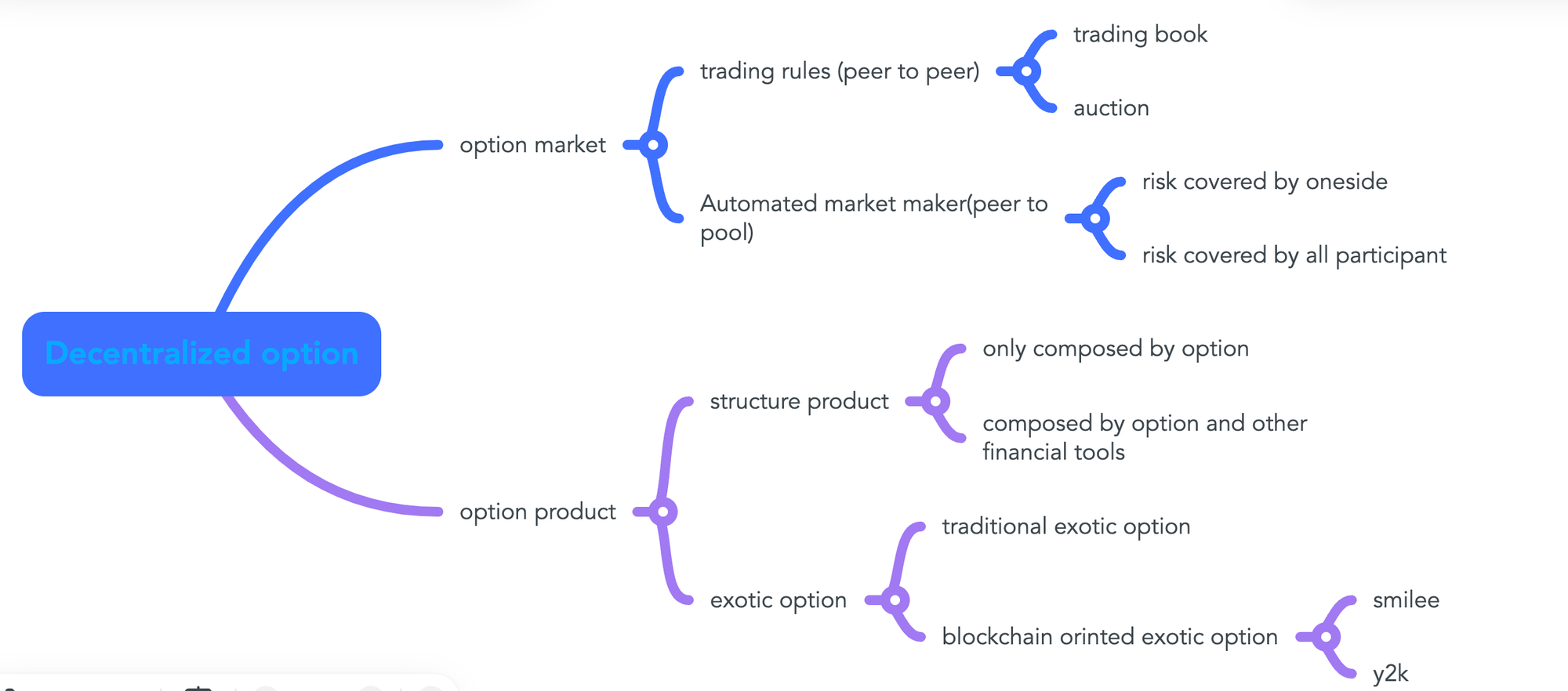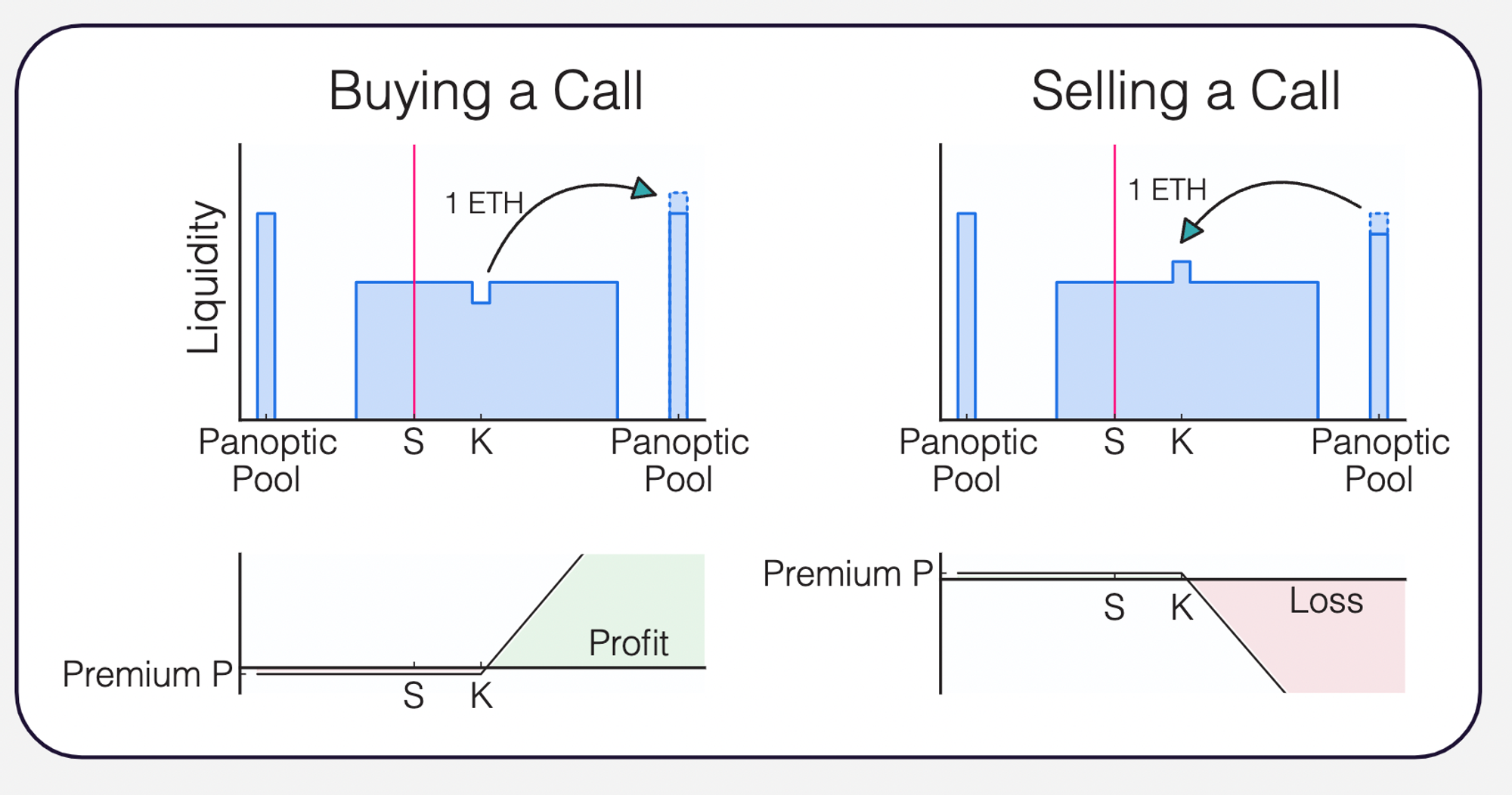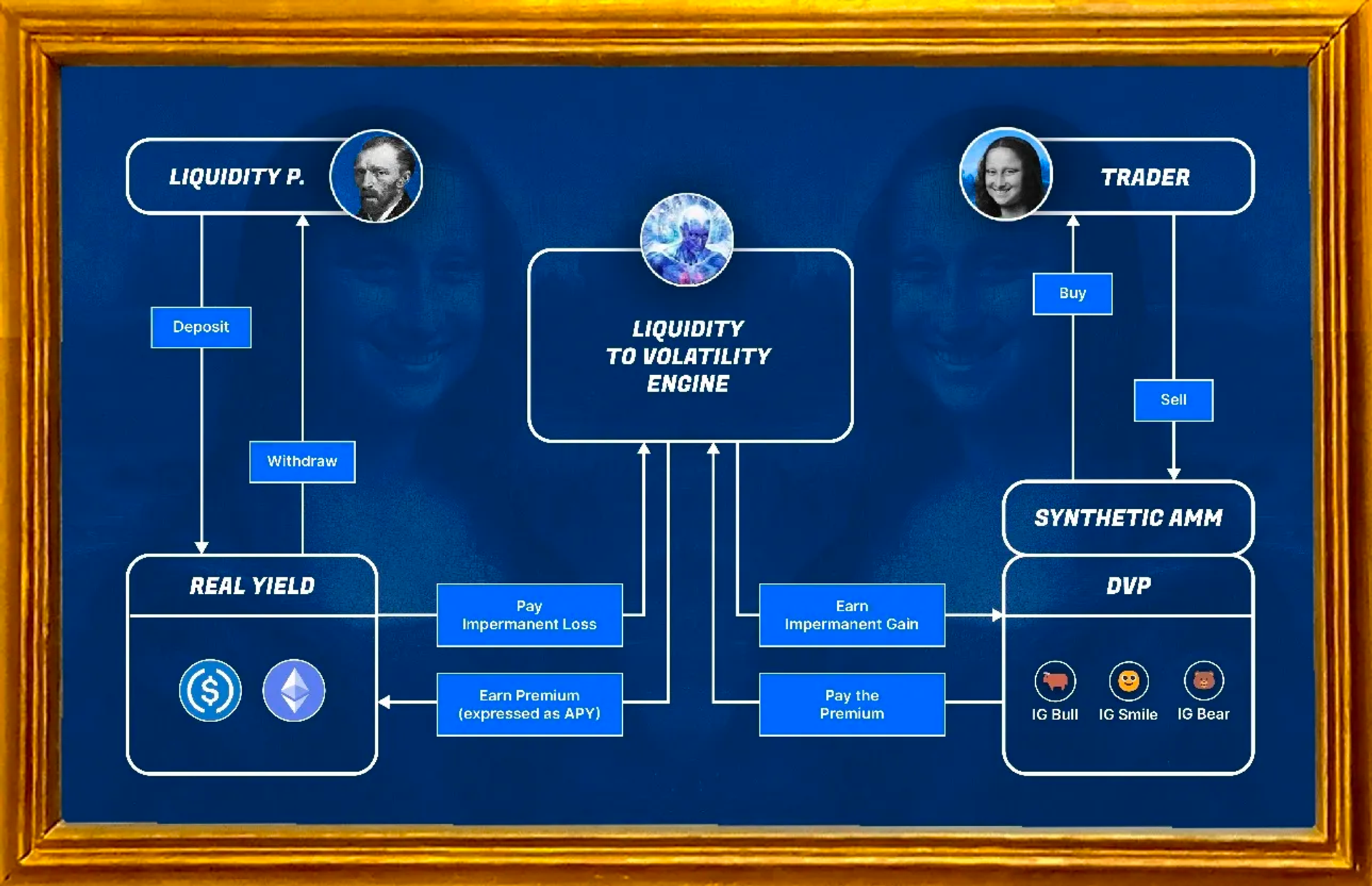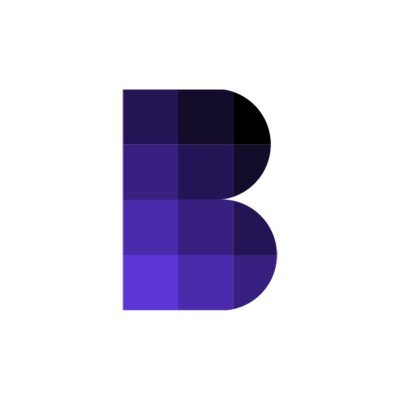Introduction:
An option is a contract that gives the option buyer the right, but not the obligation, to buy or sell an underlying asset at a specified price on or before a specified date. The advent of smart contracts allows contracts to be executed automatically on-chain without human intervention. The conditions and processes for executing contracts are clear and transparent, which is a good environment for the operation of options.
Since the DeFi summer of 2020, countless teams and projects have started to move towards decentralized options. In the past three years, the industry has once seen a flourishing scene, with significant progress in terms of accounting infrastructure, option types, and market making algorithms.
As the market enters a bear market, the cost of token incentives is increasing. The activeness of decentralized options, which were once inflated, is starting to decline. Innovation is concentrated on micro-innovations in financial products, except for a small number of projects. The market rewards breakthrough innovations that are in line with the blockchain architecture and the decentralized environment. Projects like Lyra, which stand on the shoulders of giants, have formed a DeFi matrix and formed a unique algorithm system for option pricing. Although the market scale has shrunk, Aevo and Lyra have occupied the absolute leading market share.
Compared to the off-chain-based trading volume of hundreds of billions of US dollars, the scale of chain-based options is not even a fraction of that. In the traditional market, the nominal trading volume of options is basically at the same level as futures. From this data, we can tell that the chain-based options market is still in its early stages. In the second half of 2023, the technology of second-layer networks has gradually matured, and the infrastructure technology for low-cost deployment of exchange-based options markets has allowed the chain-based options market to explode with new growth.
We have long passed the "decentralization is good" DeFi summer, and all decentralization will be questioned: WHY!
Background of decentralized options
What are options
To understand decentralized options, we must first solve two questions: what are options, and why should they be decentralized?
Options are simply contracts that give the buyer the right, but not the obligation, to buy or sell an underlying asset at a specified price on or before a specified date. Option holders have the right to execute the contract under the agreed-upon terms.
Options are a special type of financial contract and a financial instrument that is correlated with price fluctuations. From a qualitative perspective, options reflect not only the price changes of underlying assets, but also the rate of price changes, the difference in exercise time, and so on.
Options are a financial instrument related to risk pricing. Changes in option prices can reflect price attributes that cannot be expressed by spot and futures prices, providing investors with more dimensions and tools for hedging risks and designing asset portfolios.
In addition, options have a wide range of uses. Understanding the uses of options can help us identify the precise users of option products. In the traditional world, options have a number of uses besides being leverage tools:
- Risk management tools. Options are risk management tools that can be discussed from both business and compliance perspectives. Enterprises and projects are constantly facing the price fluctuations of raw materials and products. In addition to using futures to lock in costs and revenue in advance, they can also buy options to obtain the right to buy or sell at a specified price within a specified period of time. This is equivalent to locking in the upper and lower limits of expenditure and income, and guaranteeing the minimum profit. For financial institutions, derivatives are new things, and their types and complexity are higher than stocks and bonds. In terms of circumventing regulation, options can often play an unexpected role. In trading, some traders hold a large number of chips, and when they handle some risk control flat positions, they may face high liquidity losses. Therefore, holding some corresponding options at low volatility times can convert liquidity loss risks into fixed cost expenditures.
- Financing tools. In finance, options are also important financing tools. We will not discuss convertible bonds as a combination of options and bonds. Historically, many companies have also financed their companies by selling options. In October 2022, Tesla raised $2.2 billion by selling 5 million call options. The options allow the holder to buy Tesla shares at $1,100 per share in January 2024.
- Organization incentive tools. In many traditional organization, options are also used to incentivize middle and senior management. This behavior is commonplace in the traditional world. There is a large body of literature on the pros and cons of stock option incentives.
- Leverage and speculative tools. Many investors use options to speculate. They use small capital to leverage large profits, and even bet on trading opportunities in terms of time cost or volatility. This is a function that many other financial instruments do not have.
In 2020, with the landing of spot DeFi, decentralized derivatives were mapped from traditional finance. Everyone hopes to share the profits of centralized financial institutions' option business on decentralized platforms. So how do we define decentralized options?
In traditional finance, options have different circulation markets, in addition to over-the-counter trading on exchanges, there is also the OTC market.
What are decentralized options
Decentralized options are smart contracts that are issued on the blockchain and have option properties. Compared to the traditional options market, it is permissionless, transparent, and has no default risk. It has stronger composability with other decentralized products. Compared to traditional options on centralized exchanges or over-the-counter options, the execution of options is guaranteed by blockchain smart contracts and executed automatically. This is the only difference between decentralized options and traditional options.
Decentralized options projects come from the mapping of centralized options markets. In traditional financial markets, the derivatives market is far larger than the spot market, and the options market is on a par with the spot market. With the success of a number of decentralized spot exchanges such as Uniswap and Curve, it has demonstrated the potential of smart contracts in the financial industry. Many teams saw the future of decentralized futures and even options. Under the halo of DeFi summer, the drawbacks of decentralization were concealed, and many teams devoted themselves to the hot construction of decentralized options.
What are decentralized options
Decentralized options are smart contracts that are issued on the blockchain and have option properties. Compared to the traditional options market, it is permissionless, transparent, and has no default risk. It has stronger composability with other decentralized products. Compared to traditional options on centralized exchanges or over-the-counter options, the execution of options is guaranteed by blockchain smart contracts and executed automatically. This is the only difference between decentralized options and traditional options.
Decentralized options projects come from the mapping of centralized options markets. In traditional financial markets, the derivatives market is far larger than the spot market, and the options market is on a par with the spot market. With the success of a number of decentralized spot exchanges such as Uniswap and Curve, it has demonstrated the potential of smart contracts in the financial industry. Many teams saw the future of decentralized futures and even options. Under the halo of DeFi summer, the drawbacks of decentralization were concealed, and many teams devoted themselves to the hot construction of decentralized options.
Why decentralized options are important
Decentralized options have a number of advantages over centralized options, including:
- No counterparty risk: Decentralized options are executed by smart contracts on the blockchain, which eliminates the risk of counterparty default.
- Greater fairness: Decentralized options are open to all participants, regardless of their location or financial status.
- Deeper capital collaboration: Decentralized options can facilitate more complex financial transactions, such as hedging and arbitrage.
No counterparty risk
In traditional options, buyers and sellers are exposed to counterparty risk, which is the risk that the other party to the contract will default on their obligations. This risk is eliminated in decentralized options because they are executed by smart contracts on the blockchain.
Greater fairness:
In traditional finance, regulators have established various entry barriers to prevent fraud. On the one hand, this protects the interests of users, but on the other hand, it inevitably leads to some people losing the opportunity to participate. In decentralized options, all participants are subject to the same rules and regulations, regardless of their identity or status. This makes decentralized options more fair.
Deeper capital collaboration:
Decentralized options can facilitate more complex financial transactions, such as hedging and arbitrage. This can help to improve liquidity and efficiency in the financial markets.
The market for decentralized options
New things and traditional things have differences in many aspects. Unlike traditional finance, whether from the underlying assets to the users, or the channels. Decentralized options and traditional markets are different, and there is the possibility of differentiated competition.
Decentralized finance is always pure on-chain data operations. The best underlying assets are of course the original on-chain assets. If you need to process off-chain assets, you will inevitably have to come into contact with centralized power and organizations. This belongs to the RWA business, which is subject to compliance and cannot avoid the drawbacks of centralization.
In addition, option users are also different.
First, the users of traditional options are very clear, while the target users of the decentralized options market are unclear. In traditional businesses, industrial capital will participate in the options market. As in the futures market, industrial capital is an important player in the traditional futures options market. They even have some control over the price of the underlying asset. The financial market is a bilateral market for trading risks and returns, and industrial capital is responsible for providing risks and risk capital. In the decentralized options market, the businesses involving underlying assets are simple and the business volume is not large. The truly viable decentralized industries are nothing more than infrastructure such as chains, oracles, and data retrieval, and some DeFi projects. For example, the largest BTC among them, the current annual production does not exceed 400,000, and the underlying value risk that needs to be hedged is less than 100 billion. Without a strong on-chain workforce, it is actually difficult to obtain enough industrial demand. This leads to the fact that we actually do not have a decentralized options market with rigid demand.
The users of on-chain options should be more biased towards programs rather than humans. The entry barrier for on-chain options is low for programs and high for humans. The design of on-chain options trading products should increase the interaction between smart contracts, and reduce the interaction between human accounts and smart contracts.
Second, the difference in compliance preferences. Centralized options have a complete risk control and compliance system, which can take on various qualified investors clearly stipulated by law, while decentralized options have incomplete compliance and risk control systems. They engage in businesses that are not prohibited by law, attracting individuals with low compliance requirements.
Third, decentralized options allow for more option underlying assets. The volatility of underlying digital asset prices is large, leading to high option prices. Many digital assets are not subject to legal regulation, have high concentration of holdings, and the risk of being manipulated by prices is unpredictable. Therefore, for digital asset-related products, centralized exchanges are difficult to expand the business of underlying digital assets. It is difficult to develop suitable option underlying assets except for some stablecoins and ETH, BTC. Some decentralized exchanges have designed the concept of "private pools", which allow market makers to independently bear the risk of exercising certain options, allowing the decentralized options market to compete with the centralized options market in a differentiated manner.
Fourth, due to the difficulty of using the product, high threshold, and high compliance risk. Even though many projects have adopted token airdrops, trading rewards, and other marketing strategies, the participating funds and product users are still scarce. If the product is not active, it will face the dilemma of poor liquidity. Decentralized exchanges have reduced the number of available options exercise prices and exercise times. Opyn even created perpetual options, which further concentrated liquidity.
Fifth, although decentralized exchanges have achieved no default risk through smart contracts. But the no default under this smart contract requires the asset value controlled by the contract to be higher than the loss risk faced by the option. The insurance premium in the contract is in a state of over-collateralization. The utilization efficiency of funds is generally low.
Conclusion
Decentralized options have a number of advantages over traditional options, such as no counterparty risk, greater fairness, and deeper capital collaboration. However, there are also a number of challenges that need to be addressed, such as the lack of clear target users, high entry barriers, and low liquidity.
The Bottlenecks of Decentralized Options Markets
Decentralized options markets are an exciting new asset class, but they are still in their early stages of development. As a result, there are a number of bottlenecks that need to be addressed before they can reach their full potential.
High Costs
One of the biggest bottlenecks is the high cost of using decentralized options markets. This is due to a number of factors, including operational costs, risk costs, and education costs.
- Operational costs are the fees that users must pay to miners to process transactions on the blockchain. Gas fees can be particularly high on popular blockchains such as Ethereum, and some projects may require oracle quotes. This can make decentralized options markets prohibitively expensive for some users.
- Risk costs are another factor that contributes to the high cost of using decentralized options markets. Decentralized options markets are a relatively new industry, and they lack the same level of historical precedent as traditional options markets. This means that it is difficult to prove the security of these systems with certainty. The potential risk costs are a barrier to widespread adoption.
- Education costs are another factor that contributes to the high cost of using decentralized options markets. Decentralized options markets are complex and can be difficult to understand. Users need to have a good understanding of how they work in order to use them effectively. This can be a barrier for some users.
Unmatured Market
Another bottleneck is the immaturity of the decentralized options market. This is not only due to the higher risk of decentralized options markets compared to traditional options markets, but also because there is not yet a strong and consistent demand for them. This can make it difficult to find buyers and sellers for options, which can lead to low liquidity. Low liquidity can be mitigated by reducing the number of options available, but this can make trading more inconvenient.
The immaturity of the market is also reflected in the lack of use cases for decentralized options. Traditional options are used for a variety of purposes, such as hedging risk, generating income, and speculation. However, decentralized options are not yet being used for these purposes in a significant way.
Low Capital Efficiency
Another bottleneck is the low capital efficiency of option margin. In traditional financial markets, platforms allow users to maintain a certain level of margin risk. This is based on centralized credit. Platforms have access to user information and can pursue users in the event of a margin call. However, in decentralized options markets, users are often anonymous and platforms do not have the ability to pursue users. As a result, platforms must increase margin requirements or risk fees to reduce the risk of liquidation.
In traditional trading platforms, users' assets are held by the platform, which can be used as collateral for margin. However, in current decentralized platforms, users must transfer the ownership of their assets to the platform before they can be used as collateral.
Decentralized platforms cannot pursue users for losses beyond their margin, so they must reduce the risk of liquidation. Increasing margin requirements or risk fees is a necessary measure.
Unmatured Infrastructure
Decentralized options markets also rely on immature infrastructure, such as wallets and exchanges. These infrastructures can be complex and difficult to use, and they are not always reliable. For example, it can be difficult to store private keys, and wallets can be hacked. In addition, the trading interfaces of decentralized options exchanges can be clunky and difficult to use, and they lack sufficient analytical tools and software.
Despite these bottlenecks, there has been significant progress in developing decentralized options markets. Many new projects are working to address these challenges, and the market is growing rapidly. As the market matures, we can expect to see these bottlenecks addressed and decentralized options markets become more accessible and user-friendly.
The Landscape of Decentralized Options Markets
Decentralized options markets can be divided into three main categories: option issuance, option market making, and structural products under option tools.
Option Issuance
Option issuance is the process of creating new options contracts. In decentralized options markets, option issuance can be done by individuals, institutions, or even smart contracts.
Option Market Making
Option market making is the process of providing liquidity to the options market. In decentralized options markets, option market makers can be individuals, institutions, or even smart contracts.
Structural Products under Option Tools
Structural products are financial products that use options to achieve specific investment goals. In decentralized options markets, structural products can be created using smart contracts.
Classification of Decentralized Options
Decentralized options can be classified in different ways, depending on the specific criteria.
By the way options are priced
Decentralized options can be priced in two ways:
- Centralized pricing: In this model, a central entity, such as a smart contract, is responsible for setting option prices.
- Decentralized pricing: In this model, option prices are determined by the interaction of market participants.
By option type
Decentralized options can be divided into two main types:
- Regular options: These are the most common type of options and have fixed strike prices and expiration dates.
- Exotic options: These are more complex options that have features that are not found in regular options, such as barrier options, binary options, and basket options.
By margin requirements
Decentralized options can also be divided based on the margin requirements that are imposed on option buyers and sellers.
- Full margin: In this model, option buyers and sellers must deposit enough collateral to cover the full cost of their positions.
- Partial margin: In this model, option buyers and sellers only need to deposit a fraction of the full cost of their positions.

Automated Classic Option Market Making
Asset pricing has always been at the core of the financial industry. How to price options and establish a pricing mechanism is the crown jewel of on-chain option models. The closer the pricing is to the equilibrium price, the more it can stimulate trading, thereby improving capital utilization and generating higher returns. The market making mechanism is a solution to the pricing problem. Years of practice have shown that exchanges and market makers are profitable businesses, and are naturally favored by capital and projects.
Automated market makers are an innovation in the DeFi industry. From the first generation of spot markets to the continuous iteration of futures markets, even market making algorithms have appeared in the options market. The leader in this field is Lyra.
Lyra
Lyra's option market making has absorbed the successful experience of DeFi predecessors such as Synthetix and GMX, and established a capital pool as the counterparty to all option traders, using collective funds to absorb potential risks. Lyra splits option risk into delta risk, which is the risk of option price changes caused by changes in the underlying asset, and vega risk, which is the risk of option price changes caused by changes in the volatility of the underlying asset. Delta risk is hedged in the futures pool, and vega risk is absorbed by the capital pool, with corresponding fees charged. In Lyra's design, an option quote ultimately becomes the basic pricing of the BS model plus a risk adjustment. The risk adjustment will change with the net risk exposure of the capital pool.
Lyra's market making method can effectively solve the option pricing problem of highly liquid assets. Highly liquid assets are at the forefront of the market and occupy the mainstream of the market. The market capitalization of BTC alone exceeds 75% of the total market capitalization of fungible tokens. Whoever can capture the leading market will dominate the entire options market. However, the disadvantage is that these large-scale underlying assets have long been marked as key targets by centralized exchanges. The disadvantages of centralized risks are only exposed when there are risks. Long-term usage habits make people rely on convenient and practical centralized exchanges.
Deri
Deri is also a comprehensive financial trading platform. The role of the platform is a market maker. The quotation adopts the DPMM model, which is similar to Lyra in short. First, use the BS model to generate a standard quotation for an option, and then introduce the platform's position as an adjustment parameter. Use prices to guide net positions close to 0.
Optix
Optix is designed to be a market maker + trader structure, using independent funds, self-reliance, and equal competition. The Optix platform allows multiple capital pools, each of which is associated with a set of oracles, and is responsible for independently deciding the pricing of the products it covers. An asset pool can be collateral for multiple products. In this way, Optix gives the pricing power of products to independent strategy asset pools, and one asset pool is equivalent to one market maker. Optix is more like an asset management tool for option collateral, solving the management of option charges and payouts.
Because asset pools are self-reliant, Optix has a higher tolerance for risk. In addition to accepting highly decentralized and liquid underlying assets such as BTC and ETH, it can also accept other ERC20 assets. If it is said that Lyra's quotation uses mathematics to activate the liquidity of the mainstream market, then Optix uses game theory to activate the trading of the long-tail market. The pricing of mainstream assets is very important, but providing quotations for long-tail assets is also a guarantee for options to perform their functions.
Looking at Optix's underlying assets, many small coins still have difficulty landing on the platform, and the expansion of underlying assets is limited. The root cause is that it is difficult to find a motive for small coin option market making.
Premia
Premia's design philosophy is to treat all traders equally. It uses the order book model to quote and trade. It provides automatic market making algorithms for ordinary investors without market making experience, and professional asset pool services for institutional investors and professional investors.
I believe that accurate market maker quotes are a necessary condition for efficient liquidity creation. Therefore, the quotation algorithm of an automated market maker is its core asset. Although Optix and Premia have centralized components, such as the possibility that the quotation data connected to the oracle comes from private individuals, we cannot prove that a mixed system cannot produce efficient liquidity.
Panopic
Panopic is a strategy that uses Uniswap LPs as a type of option replicator. To create an option, you provide liquidity to the public pool. To hold an option, you withdraw liquidity from the pool.
Panopic also uses a fractional margin system. Compared to closed centralized options, it is not known whether there is a risk of liquidation until liquidation. Traders can read on-chain data and combine it with liquidation solutions to help them measure counterparty risk. In other words, the option price can better include counterparty risk. Relevant practices are just beginning, so let's see how it goes.

Hegic
Hegic, founded in 2020, is considered to be a pioneer of decentralized options. Unlike later entrants, Hegic was born in an era when on-chain costs were very high and there was ideological resistance to compromise with centralization. Therefore, in the quotation model, Hegic simplified the complex option price related to time, strike price, and volatility into a model that is only related to market price and interest rate. The longer the exercise period, the higher the interest rate. There is no doubt that this design has great limitations. When volatility is high, the fair price of an option should be higher than the Hegic quote; when volatility is low, the opposite is true. The option price does not reflect supply and demand.
In terms of risk dilution, Hegic pits option buyers and sellers against each other, and all losses from options are borne by the providers of the capital pool.
Aevo
Aevo replicates the business of traditional centralized options exchanges on a Layer 2 network. Adhering to the business logic of performing complex calculations offline and recording the final results on the chain, Aevo is a hybrid exchange. As a Layer 2 network + order book option exchange, Aevo has a cross margin function and a liquidation process similar to centralized exchanges. Priority is given to liquidating assets, and if the margin is insufficient, the profitable positions are closed out. However, the platform's insurance coverage is still lacking. It is important to note that Aevo is also a hybrid business platform, with many other businesses besides options, such as perpetual futures and lending. On top of the basic business, Aevo has also built wealth management products. Like Lyra, it has formed a financial matrix.
Conclusion
Over the past three years, we have seen the decentralized pricing system become more sophisticated and efficient. With the completion of the infrastructure, the on-chain options track is gradually maturing. Like the vast majority of current on-chain projects, the end point of decentralized projects is not to be as good as centralized projects, but to be better in some aspects that centralized projects cannot achieve. We have almost achieved the same level of performance, and now we need to find demands that centralized projects cannot meet.
Structured Products
With the development of decentralized options markets, decentralized structured products based on options are also constantly innovating. However, the current innovations are not closely related to the decentralized attributes and blockchain architecture. Similar shadow products of the products themselves can also be seen in centralized options tools.
Structured products are products that use smart contracts or other programs to interact with decentralized options instead of humans.
We know that options are valuable as hedging tools. Just like buying insurance, users with hedging needs are willing to pay a premium for hedging. However, the premise is that the design of the option product can solve the actual risks faced. For example, someone participates in AMM and estimates an annualized return of 20%. Through futures, the risk of one-sided asset price fluctuations and unfunded losses can be hedged. If you can pay some money to hedge unfunded losses, let the remaining annualized return be higher than US Treasuries. Then, this is a risk-free arbitrage mechanism. This mechanism can provide continuous profits for option sellers, rather than zero-sum games.
Ribbon Finance and Theanuts Finance are both dedicated to raising funds to do a single covered call+put selling strategy. Benchmarked against the yield enhancement products of centralized exchanges. Through the sale of options, funds can obtain sustained positive cash flow in the long term. Because the options sold are short-term out-of-the-money options, the chance of being exercised is small. As long as the design of the option is controlled well, it is possible to form a phenomenon of sustained profitability in the short term. The reality is that Ribbon Finance uses external institutions to auction options to determine prices, losing the pricing power of options. Currently, many structured products are in a loss.
Cega provides structured financial products. If the underlying asset portfolio does not reach the extreme price (down 50%) within 27 days, the funds in the asset pool will grow. Otherwise, it will be paid to the counterparty. In essence, it is also a bond+out-of-the-money put option.
BracketX offers a short-term (2-day) product that bets on the volatility range. Within the agreed time frame, whether the underlying asset triggers the boundary of the price channel will determine who pays whom. This product is a simple asset portfolio of options. In this way, the tools for gambling are increased, and the difficulty of operating gambling is reduced.
There are also platforms like Hegic that provide a one-click deployment of corresponding option combination strategies.
The birth of a large number of structured products highlights the characteristics of trustless and non-regulatory of on-chain derivatives. It breaks the monopoly and lowers the threshold for issuing option derivatives. However, it is not difficult to find that the design of structured products itself has nothing to do with decentralization and blockchain. Similar financial products can also be seen in centralized exchanges. The intelligence of structured products still needs to be strengthened.
Exotic Option Design
Option issuance
In general, option trading platforms have their own option issuance. It is worth noting that option trading platforms focus on headstream traffic, and niche markets such as exotic options may not be able to be effectively covered. Therefore, a number of exotic option projects have been produced.
Exotic options
Exotic options are largely serving the chain ecology, the most prominent of which is Y2K Finance. It mainly establishes a binary option for gambling against the depegging of stablecoins, and the price of the option is determined according to the distribution of chips on both sides of the option. The disadvantage of Y2K Finance is that its return rate is not clear, and it will constantly adjust the quotation of the option according to the size of the bets made by buyers and sellers. For investors, it means participating in a gamble with unknown odds.
Perpetual options
In addition, some projects that compete for headstream assets have created perpetual options in order to aggregate liquidity and reduce the complexity of options. The birth of perpetual options means that a more radical exploration has been made in terms of exercise time. If American options extend the exercise window of European options, perpetual options simply smash the entire wall and can be exercised at any time period. Correspondingly, perpetual options have abandoned the sensitivity of options to time risk. People are not suitable for using perpetual options to speculate on fluctuations based on the time value of options. Perpetual options are a brand-new product. Although they have higher freedom and avoid direct competition with centralized exchanges, auxiliary pricing tools are rare and the learning cost is high. At present, the onboarding effect is not ideal. In the absence of sufficient benefits, user learning motivation is insufficient. Among these perpetual options projects, Opyn and Deri are relatively well-known. Opyn is the pioneer of perpetual options, and its parent company Paradigm helped it to raise its flag, taking the lead. Deri expanded to perpetual options based on perpetual futures business, adopting a strategy similar to Synthetix, providing "comprehensive" financial services.
Smilee finance
Smilee finance has been developing products for unfunded loss risk, hoping to price and trade unfunded risk through products. The design of the product adopts the design of perpetual options, and the price of perpetual options is measured by the BS model. For the product, the entire smile curve is divided into three segments: bull, bear, and full. When choosing bull or bear alone, you can double the leverage for speculation.
Opyn

Opyn leverages options to add risk hedging tools. Compared with Smilee, which directly targets unfunded loss, Opyn hopes to use Squeeth+traditional financial tools to fit unfunded loss. Squeeth returns are curved. Like other new financial instruments that have been created, Squeeth faces the dilemma of high learning costs and difficult promotion.
The Ecosystem Position of the Decentralized Options Track
The decentralized options track has little presence. For the ecosystem, it either pursues traffic or pursues cash flow. Social and game are good at traffic, and various wallets enhance user experience. Traditional option users are high-net-worth users, accounting for only about 1% of spot users. Therefore, options cannot be used as a tool to attract users. For cash flow, either trading or lending. In trading, decentralized perpetual options have all opened contracts with 200x leverage, leaving no way out for options to leverage.
So, does options have no functions to attract the ecosystem? Not really.
As mentioned earlier, the characteristic of options is to price volatility and to manage risk. The blockchain market is still in its infancy and has not yet evolved to fine-grained risk control.
When decentralized options approach the capital efficiency of centralized options platforms, in the era of rapid integration of traditional capital and blockchain, RWA is gradually moving from ideal to reality. With the change of investor composition, the preference of capital will shift from high-risk, high-return to low-risk, medium-return. Perhaps, now is the critical time for change.
We are currently in the period of the Layer2 war. It is very difficult for each infrastructure to stand out by relying on traditional successful applications. Controlling risk and forming a financial system with different risk preferences may be the key to winning the DeFi battle in the Layer2 war. Who remembers UST's contribution to Luna? Not all investors like big swings.
Spot has already been successful, and futures have also been successful. Will the spring of options be far away?
Conclusion:
After DeFi Summer, the decentralized derivatives track has developed rapidly. At present, it has formed a series of projects with classic options based on BTC and ETH core labels, and ERC20 options and exotic options as side wings. There is a lack of correlation between projects, and no option trading aggregator has been found. At present, there are not many opportunities for collaboration with other blockchain industries. Some projects hope to break through the liquidity between options and spot, and options and futures. In the era of high traffic prices, DeFi matrix operation will significantly reduce operating costs.
Personally, I think the future of decentralized options should be a point pool mode, an automated market maker mode, a mode of platform vs. individual, and all participants jointly bear the extreme risk. The structural products formed by options are still evolving. Creating low-risk, medium-to-low-yield chain-based products is the key to winning structural products.
In the use of decentralized options, the blockchain characteristics have not been highlighted. The number of players in on-chain options is far less than that of centralized exchanges. Without significant benefits, players have no incentive to learn decentralized systems. The blockchain industry has not yet formed a scale, and there is no obvious place that needs risk management. In addition, traditional functions such as option financing and option incentives have not been reflected in chain-based business: this is one of the manifestations of the immaturity of DAO.
Compared with decentralized spot exchanges that allow tokens to be traded on-chain at low cost, and decentralized futures exchanges that allow users to directly form leverage of up to hundreds of times on-chain without borrowing, options are not in the core demand position in the current competition for second-layer networks. The competition at the chain level is in the flow of funds and people. How to increase credit is a more important function at present. However, for risk tools-options, we should not be modest. Options give us the opportunity to redefine the attributes of on-chain assets.
Reference:
https://www.theblockbeats.info/news/32903?search=1
https://www.theblockbeats.info/news/34380?search=1
https://medium.com/@polygontech/best-practices-for-building-decentralized-option-vaults-5ff254687ab2
















